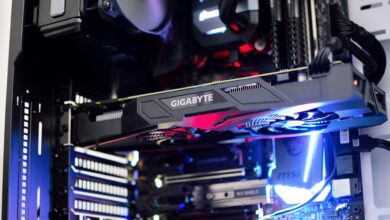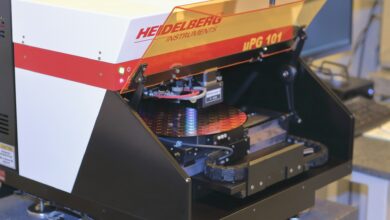Nanotechnology In Electronics Devices: The Best Practice?

Welcome to the captivating world where Nanotechnology in Electronics sparks innovation and transforms the landscape of technology. In this era of rapid advancement, the fusion of nanoscale science and electronic engineering unlocks boundless possibilities. From enhancing the performance of handheld devices to revolutionizing medical diagnostics and is the driving force behind a wave of groundbreaking developments. Join us as we delve into the intricacies of this dynamic field, exploring the nuances of nanoelectronics, nanomedicine, and beyond. Prepare to be fascinated, inspired, and motivated to embrace the future of electronics powered by the marvels of nanotechnology.
Table of Contents
What Exactly Is Nanotechnology in Electronics Devices?

Nanotechnology in Electronics
Nanotechnology in Electronics refers to the manipulation of matter on an atomic or molecular scale, typically less than 100 nanometers, to enhance the functionality and performance of electronic devices. At this minuscule scale, materials exhibit unique properties that differ significantly from their larger-scale counterparts. By leveraging these properties, scientists and engineers create components that are remarkably smaller, faster, and more efficient.
This includes the development of nanoscale transistors, sensors, and memory devices, all integral to the advancement of modern electronics. The integration enables the production of more powerful and compact devices, from smartphones to medical diagnostic tools, driving innovation across multiple industries. This cutting-edge technology not only improves device performance but also opens new frontiers for research and application, promising a future where electronic devices are more integrated into our daily lives than ever before.
Nanotechnology in Electronic Devices

Nanotechnology in Electronic Devices
1. Nanoelectronics
Nanoelectronics, a critical subset of Nanotechnology, leverages the unique properties of nanoscale materials to revolutionize electronic components. By integrating carbon nanotubes, graphene, and other nanomaterials, nanoelectronics achieves unprecedented levels of miniaturization and performance. These advancements enable the creation of ultra-fast processors, highly sensitive sensors, and efficient energy storage systems. The impact is profound, driving innovations that lead to smaller, faster, and more powerful devices. From enhancing consumer gadgets to advancing medical diagnostics, nanoelectronics is at the heart of the next technological leap.
2. Nanocoatings
Nanocoatings, a pivotal aspect of Nanotechnology in Electronics, involve the application of nanoscale materials to surfaces, enhancing their properties significantly. These coatings provide exceptional protection against corrosion, wear, and environmental damage. They also improve thermal and electrical conductivity, crucial for electronic components’ performance and longevity. the employs nanocoatings to create scratch-resistant screens, self-cleaning surfaces, and anti-reflective layers. This technology not only extends the lifespan of devices but also ensures their optimal functioning in various conditions, contributing to more durable and reliable electronic products.
3. Energy
In Electronics is revolutionizing the energy sector by enhancing the efficiency and capacity of energy storage and conversion devices. Nanoscale materials improve batteries, supercapacitors, and fuel cells, leading to faster charging times and longer-lasting power. For example, nanomaterials like graphene and silicon nanowires significantly increase the energy density and lifespan of lithium-ion batteries. These advancements not only benefit consumer electronics but also drive progress in electric vehicles and renewable energy systems. The integration of the thus promises a more sustainable and energy-efficient future.
4. Cosmetic Nanotechnology
Nanotechnology in cosmetics is revolutionizing the beauty industry by enabling the creation of products with enhanced efficacy and unique properties. By utilizing nanoparticles, cosmetic formulations achieve better penetration and delivery of active ingredients, resulting in more effective skincare solutions. For instance,it allows sunscreens to provide superior UV protection without leaving a white residue. Additionally, it improves the texture and consistency of creams and lotions, ensuring smoother application and longer-lasting effects. This innovative use of nanotechnology is setting new standards for beauty and personal care products, offering consumers advanced solutions for their skincare needs.
5. Automotive Industry
The automotive industry is embracing the potential of nanotechnology to drive innovation and efficiency. By integrating nanomaterials into vehicle design and manufacturing processes, engineers are creating lighter, stronger, and more durable components. From enhancing engine performance to improving fuel efficiency, nanotechnology is revolutionizing every aspect of automotive engineering. plays a crucial role in advancing electric vehicle technology, offering solutions for battery efficiency and range optimization. This shift towards nanotechnology signifies a transformative era in automotive engineering.
6. The Construction Industry
In the realm of construction, nanotechnology is catalyzing a paradigm shift towards smarter, more sustainable building practices. By integrating nanomaterials into construction materials and processes, engineers are creating structures that are not only stronger and more durable but also more energy-efficient and environmentally friendly.it enables the development of self-healing concrete, lightweight yet robust materials, and advanced insulation systems. This innovative approach is revolutionizing the way we build, paving the way for a future where structures are not just erected but engineered to thrive.
7. Display Nanotechnology
Display Nanotechnology is reshaping the landscape of visual technology, offering brighter, sharper, and more energy-efficient displays. By leveraging nanotechnology, manufacturers can create displays with higher resolution and better color accuracy. Quantum dots, a type of nanomaterial, enhance the vibrancy and contrast of images, resulting in stunning visual experiences. Moreover, it enables the development of flexible and bendable displays, expanding the possibilities for innovative form factors in consumer electronics. The integration of nanotechnology into displays represents a paradigm shift in visual display technology.
8. Nanomedicine
In nanomedicine, nanotechnology revolutionizes medical diagnosis, treatment, and drug delivery. Nanoscale materials enable precise targeting of diseased cells, reducing side effects and enhancing treatment efficacy. Nano-sized drug carriers transport therapeutic agents directly to affected tissues, improving drug bioavailability and reducing systemic toxicity. Additionally, nanotechnology enhances imaging techniques, providing clinicians with detailed insights into cellular structures and disease progression. The integration of nanotechnology into medicine promises personalized treatments and improved patient outcomes.
Applications of Nanotechnology in Electronic Devices

Applications of Nanotechnology in Electronic Devices
1. Printed Electronics
Printed electronics is a cutting-edge field that harnesses the power of it to create flexible, lightweight, and cost-effective electronic devices. Using innovative printing techniques, conductive inks containing nanomaterials are deposited onto various substrates, such as plastic or paper, to form circuits and components. This approach enables the mass production of electronic devices with intricate designs and functionalities. Printed electronics, powered by nanotechnology, holds immense potential for applications in wearable technology, smart packaging, and flexible displays.
2. Transistors on the Nanoscale
Transistors on the Nanoscale represent a significant milestone. These minuscule electronic devices, comprised of nanomaterials such as carbon nanotubes or nanowires, offer unprecedented performance and efficiency. By shrinking transistors to the nanometer scale, engineers can pack more computing power into smaller chips, leading to faster and more energy-efficient electronic devices. The development of transistors on the nanoscale, driven by nanotechnology, is instrumental in advancing fields like computing, telecommunications, and sensor technology.
3. Smart Panels
Smart Panels exemplify the fusion of innovation and functionality in Nanotechnology in Electronics. These sophisticated panels integrate advanced sensors, actuators, and control systems to respond intelligently to environmental stimuli. By leveraging nanotechnology, smart panels can achieve enhanced energy efficiency, adaptive lighting, and responsive interfaces. From smart homes to industrial automation, these versatile panels offer a glimpse into the future of interconnected and intelligent electronic systems. The integration of it propels smart panels to the forefront of technological innovation, revolutionizing various industries with their transformative capabilities.
4. Magnetic RAM
Magnetic RAM, a pinnacle of Nanotechnology in Electronic, revolutionizes memory storage with its non-volatile and high-speed capabilities. Utilizing nanoscale magnetic elements, this innovative technology offers faster read/write speeds and lower power consumption compared to traditional RAM. By harnessing the principles of nanotechnology, Magnetic RAM holds the promise of enhancing the performance and efficiency of electronic devices, from smartphones to supercomputers. Its potential to reshape the landscape of memory storage underscores the transformative of impact.
5. Smaller and Enhanced Handheld Devices
The integration of Nanotechnologys has led to a paradigm shift in handheld devices, making them not only smaller but also more powerful and versatile. By leveraging nanoscale components and advanced manufacturing techniques, smartphones, tablets, and wearable gadgets have become sleeker, lighter, and more energy-efficient.it enables the creation of high-resolution displays, faster processors, and longer-lasting batteries, enhancing the user experience and unlocking new possibilities for mobile computing. The relentless innovation driven by it continues to push the boundaries of handheld device technology.
Conclusion
In conclusion, the integration of Nanotechnology into the realm of electronics has ushered in a new era of innovation and possibility. The applications of it in electronic devices, ranging from nanoelectronics to nanomedicine, have demonstrated its transformative power across various industries. As continues to advance, we can anticipate even more remarkable developments in electronic components, devices, and systems.
The ability to manipulate matter at the nanoscale opens doors to unprecedented levels of efficiency, functionality, and miniaturization. From enhancing energy storage systems to revolutionizing display technology, is reshaping the way we interact with electronic devices on a fundamental level. In essence, the future of electronics is intricately intertwined with the continued evolution and integration of it, promising a world where electronic devices are not only smarter and more efficient but also more seamlessly integrated into our daily lives.





One Comment